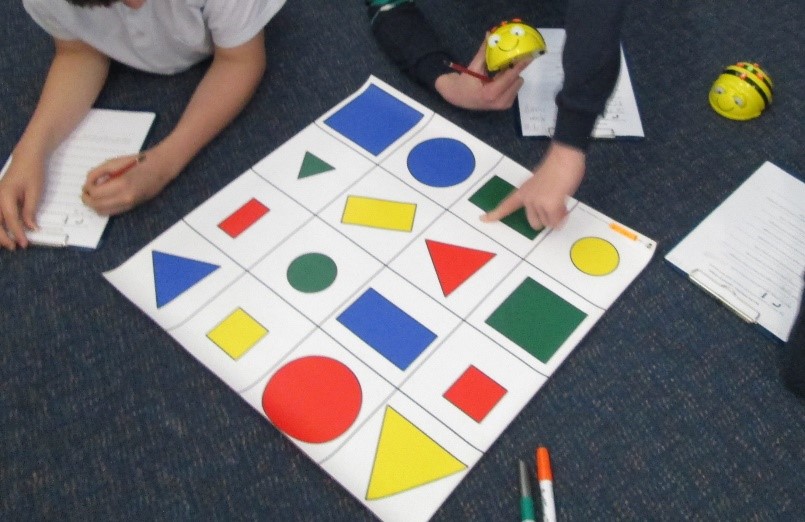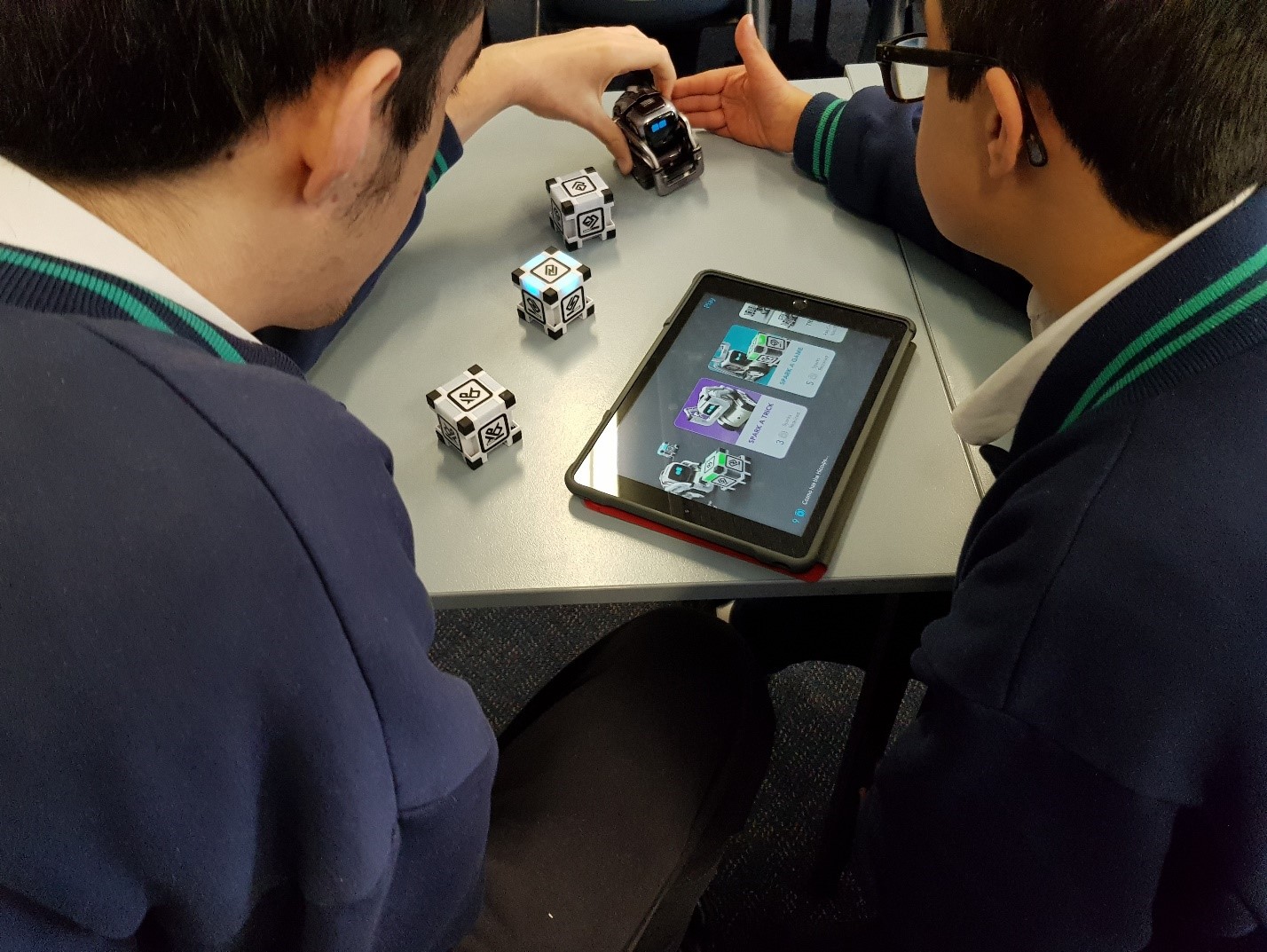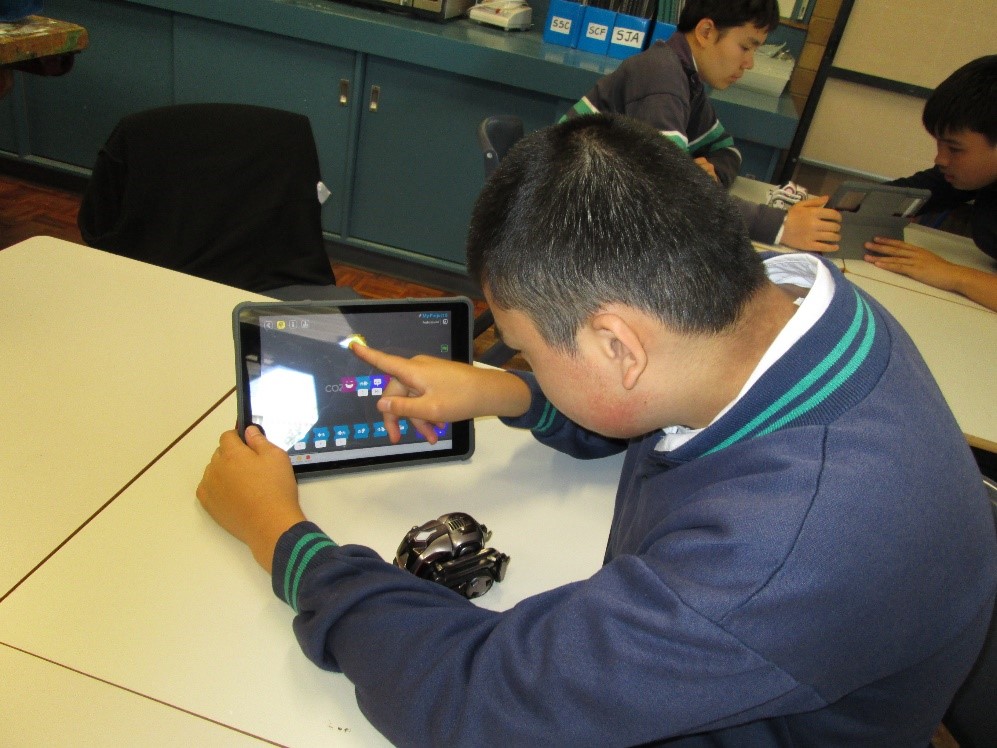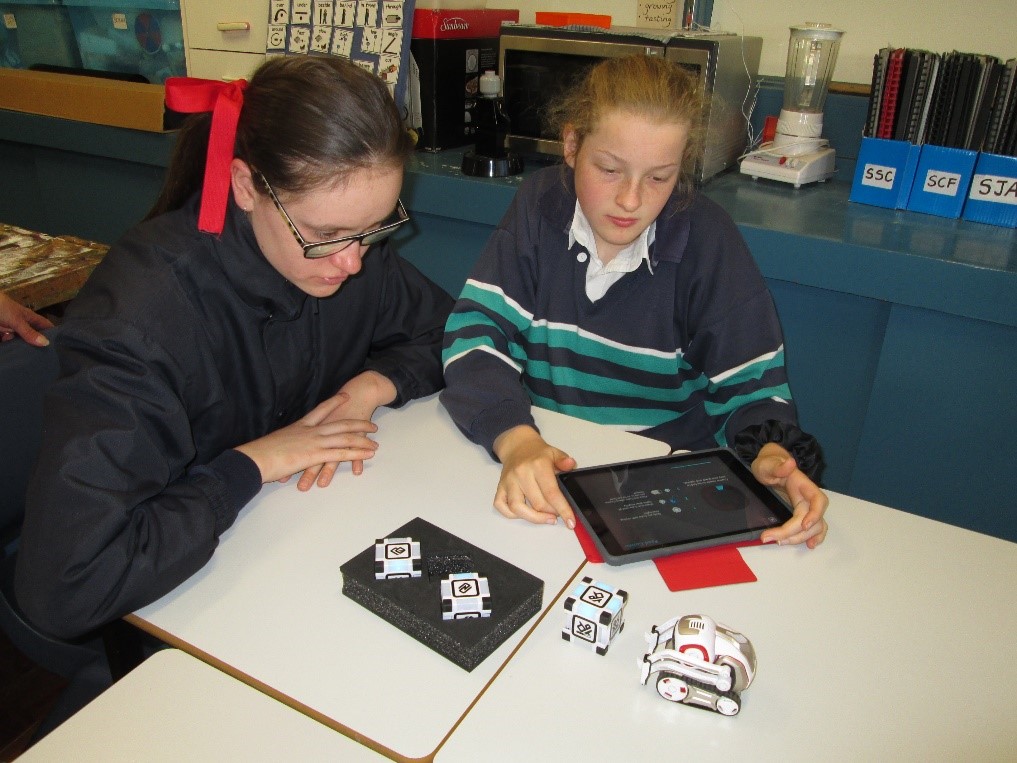DIgital technologies: MODIFYING FOR STUDENT ABILITY WITH ROBOTICS
Ashwood School
At Ashwood School, which caters for Primary and Secondary students with mild intellectual disabilities, the Cozmo robot is an important piece in the implementation of the Digital Technologies curriculum. In the video below, teacher Clark Burt explains how the Cozmo robot was used in the Secondary years. Please note that, as of July 2019, the Cozmo product is no longer being produced. Teachers are encouraged to find other personal and educational robots with similar capabilities and "personality". |
View the presentation slideshow.
As part of its participation in the 2017-2018 DigiTech Start-ups Initiative from the Victorian Government Department of Education and Training, Ashwood School received funds to spend on relevant classroom tools.
School Profile
Ashwood School is a school for children with mild intellectual disabilities for Primary and Secondary aged students. We are in the eastern suburbs and have approximately 170 students. At Ashwood, a typical class size is 10 to 12, with a range of abilities, splinter skills across all learning areas of the Victorian Curriculum. Most students find abstract concepts challenging, hence the use of concrete materials and visual aids. Therefore, we need teaching resources that are both intuitive and that cater to a range of abilities.
Several teachers at our school have been working with the Victorian Government in designing and implementing the new digital technologies curriculum for students with disabilities. When the new curriculum was launched, ICT became integrated into all subject areas and the new Digital Technologies curriculum became a specialist subject.
All students at Ashwood have an Individual Learning Plan (ILP) that is constantly reviewed throughout an academic year. Information Communication Technology (ICT) and Digital Technologies are integral in a students’ goals. Assessments are based on the Achievement Standards at Levels A-D, F-2, commensurate with the students' academic level, not chronological age. Parents discuss their child’s learning goals with teachers at the start of the year and Individual Learning Plans with SMART (Specific, Measurable, Achievable, Relevant, Time-based) goals are written and sent home to parents. During the year, students are continually assessed on their individual goals and parents receive Semester 1 report in July and a Semester report in December. Parents also receive work samples every term and are in regular communication with teachers via the student diary.
We have implemented the Digital Technologies curriculum in three ways at Ashwood School. First, we have incorporated technology in all subjects such as using iPad apps to practice math facts or create a digital comic. Second, all class groups have a 45-minute ICT session each week. Third, a new Digital Technologies subject for secondary students, which is discussed below.
PLANNING
Students with an intellectual disability, for example, are likely to have difficulty conceptualizing abstract concepts during their school years, particularly those with Autism Spectrum Disorder (Preissler, 2006; Westwood, 2002). Thus, many children in the special education classroom are in the Concrete Operational Stage, according to Piaget, where they learn best by manipulating physical objects (Westwood, 2002, see also Piaget’s theory of conservation, Piaget, 1954). Our teaching and learning programs reflect the use of visuals, hands-on activities, and tangible objects.
To implement the new curriculum, we focused on purchasing physical teaching materials including Lego, robots, and other ‘hands on’ kits like ‘littleBits’. We also decided to select three staff members to lead this implementation and they chose relevant PDs to learn more about selected technologies. Monash University invited these teachers and some students to experiment with the digital technologies equipment and makerspaces they set up, which proved valuable learning for both the students and the teachers.
We then decided to slowly start introducing these hands-on kits to supplement existing lessons, observing students behaviour and learning, to understand which products would suit which age groups the best. Students have access to technology throughout the day in the form of desktop and laptop computers, iPads, and Interactive White Boards. Each week, students have a dedicated 45 minutes of lessons in a computer lab (if not more) as well as opportunities to use technology, particularly iPads and laptops, in their English, Math, and Science subjects. Another source of testing was our lunchtime Lego club, offered once a week for 30 minutes during playtime, where students built Lego robots using the popular Lego Technics sets.
IMPLEMENTATION
Besides the integration of technology into existing subjects, and the weekly ICT sessions, DigiTech became a specialist subject for Year 7-9 students. This was to have a dedicated subject where students learn about using tools and devices to help in everyday situations. In DigiTech, students code apps and robots to follow commands. Class sizes range from 8 to 12 and sometimes an educational support staff member is there to provide additional support. Each Year 7-9 class received 45 minutes of DigiTech each week.
Again, the hands-on materials seemed to work best. iPad coding apps, Lego, and robotics created engagement and provided learning opportunities, likely because of the ability to be adapted/modified to students’ abilities.
Evaluation / assessment
Over the first year of implementation, we have found particular success with two technology products to teach coding, sequencing, and algorithmic thinking to students: Bee-Bots and Cozmo the pet robot.
Bee-Bots
For early years, Bee-Bots are a simple, yet entertaining way to teach introductory algorithms. Bee-Bots are colourful yellow plastic toys with directional buttons on top. When one or more directional buttons are pushed, and then the green ‘Go’ button is pressed, the robot lights up, moves in the direction(s) and makes a noise. The Bee-Bots work best when placed on a mat or map for students to program in an intentional path. Lessons (see included Lesson Plans) use the Bee-Bot and maps to practise sequencing and steps sending the robot from one point on the map to another. Bee-Bots do not need any other technologies, such as an iPad, to make them work and they are powered by AA batteries.
Cozmo
Cozmo is a personal companion robot designed not just for coding and games but also as a digital pet—a responsive plaything with artificially-defined needs (Anki, 2018b). Cozmo is eight centimetres tall and 9 centimetres long and comes with three digital cubes (blocks) for gameplay. ‘He’ looks like a cross between Wall-E and EVE from Pixar. “The Cozmo's face is an expressive little LED screen, like a computer monitor.” (Stein, 2016, para. 3). Cozmo has a computerized ‘voice’ that talks and sings. He might be digital, but his programmed movements and digital voice are so relatable, one could be forgiven for thinking he was real.
Please note that, as of July 2019, the Cozmo product is no longer being produced. Teachers are encouraged to find other personal and educational robots with similar capabilities and "personality".
Cozmo, is managed by an iPad/iPhone app. This app allows the user to interact with ‘him’ on various levels, from asking Cozmo to speak, to ‘driving’ him like a radio-controlled car, to sending him coded instructions. For further information about using Cozmo in a special education classroom, see Burt (2018) in the Digital Learning and Teaching Victoria Journal 5.1.
Evaluation of our curriculum implementation was ongoing as each lesson provided feedback as to whether the resources and lesson plans we chose were supporting the diverse range of abilities. Bee-bots provided very popular for their ease of use. Students found Cozmo “fun” and “cute” and students could choose how much to interact with ‘him’; from just playing the pre-installed games, to making ‘him’ talk, to coding ‘his’ movements using a block-based visual language like Scratch.
REFLECTION
The implementation was very successful from the positive comments and engagement by students. We have since expanded the specialist subject to include Years 6 and 10 and have noted that there continues to be enthusiasm for Bee-Bots and Cozmo, that a ‘honeymoon’ period where children soon get bored of a new toy, did not occur. This can be attributed to the increasing availability of resources and uses for these products. We will continue to expand these technologies into other year levels as appropriate.
Continuing PD and contacts with relevant organisations are important to maintaining the success of Digital Technologies at Ashwood School. We have connected with the Computer Science Education Research Group (CSER) at the University of Adelaide where we have taken advantage of their generous lending library program. Ashwood Staff have also undertaken further professional development on digital technologies, from local providers such as DLTV and from CSER’s online MOOCs.
Author's note: Please note that I do not work for, nor have received any incentive for promoting Cozmo or Bee-Bots. The views about these products are our own opinions based on my experiences using them in special education classrooms.
Ashwood School would like to thank the DigiTech Startup Initiative, offered by the Department of Education, Victoria, which supported the purchase of the hardware and software needed to investigate this topic.
REFERENCES
Burt, K.C. (2018). Using robots and digitech for students with disabilities. The Journal of Digital Learning and Teaching Victoria, 5(1), 27-29.
Piaget, J. (1954). The child's conception of number. New York: Norton.
Piaget, J., & Inhelder, B. (1969). The psychology of the child. New York: Basic books.
Preissler, M. A. (2006). Play and autism: Facilitating symbolic understanding. In D. Singer, R. Golinkoff, & K. Hirsch-Pasek, K.(Eds.), Play=learning: How play motivates and enhances children’s cognitive and social-emotional growth (pp. 231-250). New York: Oxford University Press.
Stein, S. (2016, October 14). Anki Cozmo has the soul of a Disney movie in a $180 robot toy [Blog Post]. Retrieved from https://www.cnet.com/products/anki-cozmo/preview/
Victorian Curriculum and Assessment Authority [VCAA]. (2016). Digital Technologies – Learning in Digital Technologies- Victorian Curriculum. Retrieved from: http://victoriancurriculum.vcaa.vic.edu.au/technologies/digital-technologies/introduction/learning-in-digital-technologies
Westwood, P. (2002). Commonsense methods for children with special educational needs (4th ed.). London: Routledge.






